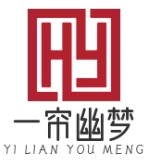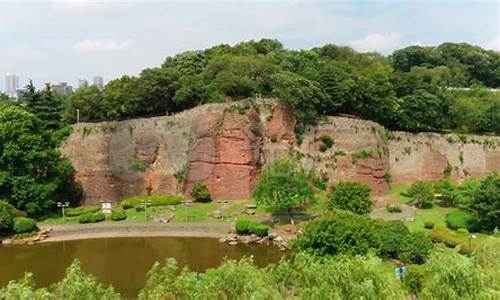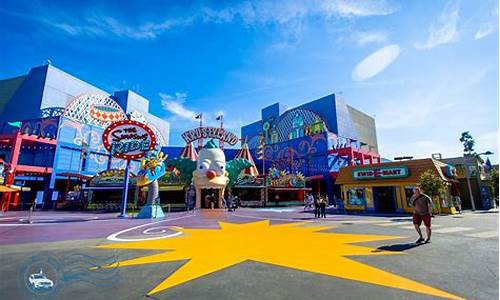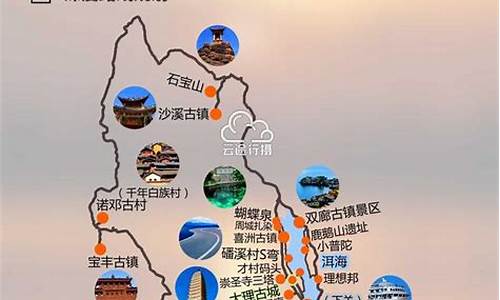北京景点预约统一平台官网,北京景点presentation
1.急!北京英语口语证书考试BOEC高级考试流程问题
2.北京大学国家发展研究院怎么样?
3.北京体育大学有哪些非体育类专业?
4.在北京外国语大学就读是一种怎样的感觉?
5.求湖南南岳旅游景点英语介绍(中文翻译)谢谢大家,尽量在150~200英文

杨澜申奥陈述:
There are a lot more wonderful and exciting events waiting for you in the new Beijing, a modern metropolis with more than 3,000 years of cultural treasures woven into the urban tapestry『绒绣;织锦』.
This is a city of millions of friendly people who love to meet people from around the world.
They believe that if the 2008 Olympics is held in Beijing, it will help enhance the harmony between our culture and diverse 『多种 多样的』other cultures around world.
在北京还有很多精彩纷呈的事情等着你们的到来。北京是一座充满着活力的现代化都市,三千年的历史文化与都市的繁华相互交织。
这是一个有数百万友好市民的城市,他们喜欢结交来自五湖四海的朋友。
北京人民相信,在北京举办2008年奥运会,将推动中国与世界文化的交流。
Editor's Note
Chinese people will never forget the moment when IOC president Juan Antonio Samaranch announced Beijing's success in the vote of the 2008 Olympic Games. The whole nation stired. At the same time, people were deeply impressed by Yanglan's presentation which contributes a lots to Beijing's success. Her smashing presentation delivered in authentic English embodys Chinese confidence and good expectation for the future.
参考资料:
一.招聘毕业生的银行主要有如下五类: 1. 四大商业银行总行(工、农、中、建); 2. 三大政策性银行(国家进出口银行、国家开发银行、农业发展银行); 3. 城市分行(如工商银行北京分行等); 4. 中小银行(光大银行,北京工商银行等)5.外资银行(汇丰,花旗)
二. 一般说来: 1. 总行比分行要好; 2. 四大行中,待遇从高到低排名是:农、中、建、工;3. 四大行待遇比政策性银行好;4. 股性制银行的待遇最好,也最难进入,例如光大银行; 5. 招聘方式一般都是一轮笔试 + 一轮多对一面试。
三.招聘流程:
1.四大商业银行总行(以中国建设银行总行为例):
1)建设银行对于研究生没有设置笔试,直接到总行进行两轮面试。
2)第一轮是多对一形式,2.5分钟自我介绍,然后每人问点问题。最后一问是一个英语问题例如为什么来建行或介绍自己家乡。
3)第二轮是一个人事主管单独见每个人,提一些问题。
4)建总行签约要预交3千保证金(报到时退还),签约5年,违约金800*未完成月数。建行的待遇,科技部门作项目的,总收入可能在4-6K/M,还常有各种奖金。宿舍最好,位置就在西单,两室一厅两人住,能住三年(以后得自己买房),建行住房公积金1400/M。
2.政策性银行(以国家开发银行为例):
1)笔试:开行笔试分两部分分开考试,都是中文。第一部分是类似公务员的综合试卷,有同义、近义、反义以及词语联想等选择,有错误句的判断,有类似GRE的那种逻辑题等等。 第二部分是心理测试题。例如问你觉得你在你朋友眼中会是什么样的人等等。
2)一面:作文 + 大组讨论。作文时间是1个小时;大组讨论:十二个人一组,抽号分配座位,围坐半圈,准备五分钟后开始自由发言。开行有六七人在别一边坐一排,不做任何评论只是不断地记录。
3)二面:多对一面试。
3.外资银行(以汇丰银行为例):
1)笔试:类似KPMG的英文与数学(题相似甚至相同,但是英文的)你要考虑到大家几乎都做过,所以你的准确率必须很高才可以过关。
2) 第二轮简单行为面试。注意他们最强调员工忠诚度,不要随便说你一辈子不离开汇丰,要用使面试官信服的方式和理由来说话。
3)第三轮是笔试case,一大堆资料,先看问题,再理清脉络,然后关注重点部分。最后是一整天的assessment center,包括小组讨论(需要表现leadership,但切记不要aggressive)+ presentation + final interview 。
北京大学国家发展研究院怎么样?
我是高级的过来人了,给你一些建议吧
首先介绍一下流程。北京口语等级考试高级共分三个环节,首先是关于你个人信息的一些问答,比如你的姓名年龄,你今天如何来到考场,令你难忘的一件事,你的第一节英语课等。
第二环节是从电脑屏幕的三个topic中选择其一,然后根据屏幕的提示和自己的理解说两分钟左右。此时你就不能再看题目了。期间考官会与你交流。本环节主要考一些关于企业(enterprise)的题目,比如企业文化等等。
第三环节是电脑屏幕出现8个数字你来选择,每个数字是一道题,然后考官会用口语问你题目,而你是看不到题目的。本环节题目较发散,比如房屋,网络等等。
然后说说如何准备口语考试。考试推荐教材《是人人说英语》,但这本教材适合报班学习,但不适合自学备考,但本书框定了12个topic,所以建议大家这样用此书:按照书中提供的12个topic去准备材料,下载每课mp3练习发音,但不用去背里面的漫画,故事,去背自己准备的材料。对于材料,建议使用雅思口语的书按专题去准备。
最后说几点注意事项。既然是口语考试,绝对不会让你把准备的材料全都背出来,那是背书考试,所以他会考一些你准备不到的题目,所以在大家都没准备这种题目时谁说的更有条理(first,second,用等引导的词),谁的语法错误越少(单3,ing)谁的成绩越高。还有如果思路断了,可以用well,you know,I mean等词衔接,千万别用嗯,啊等词。
最后一点要自信,祝你成功!
北京体育大学有哪些非体育类专业?
就是之前的中国经济研究中心,简称CCER
林毅夫以前就在那,据说下半年从世行离职以后还回去教书。
研究生非常难考,两三年都考不上很正常。毕竟考这种顶尖地方,实力是一回事,运气也是超重要的因素。
出来就业的话,认可度也是相当高的。
在北京外国语大学就读是一种怎样的感觉?
作为一名非体育专业学生,我一定要告诉大家,来北体不都是来练体育的!!北体非体育专业很多,并且也很不错。我读的是新闻与传播学学院下的广告专业(主要学习体育营销与传播,体育公关方面),课程内容会涉及到公关,广告策划写作,社会学,经济学,等。主要是体育营销与传播方向还蛮全面的。然后还有新闻学就是体育新闻方面,主要是培养体育记者,新闻同学的视听语言课巨好玩,大家会写剧本拍片子。网络与新媒体,这是18年的新专业就是把体育传媒以新媒体的方式呈现。体育解说,体育节目制作,是我们学院的方向班,会选拔然后出国一年,我学这个专业的同学现在就在西班牙。听说即将开设体育播音与主持体育表演等专业。
然后还有.国际体育与组织学院,我们都叫外语系。外语系的**姐巨漂亮的!哈哈。好像是他们会有自己的语种方向,时候应该就是在比赛翻译,国际体育比赛组织方面工作吧!国际体育人才。感觉外语系挺有意思的,我当时的第二志愿就是外语系,他们还有辅修班,到时候全校都可以报名选拔,读辅修专业。
还有很强的运动与人体科学学院,是国家级重点学科。运人的同学都很聪明,感觉他们天天在做实验哈哈,不过体育科学楼里他们的实验室都好酷!研究运动员运动机理啥的兴奋剂检测等等,偏理科吧。人文学院:汉语专业,我记得我们上毛概课和汉语的一起,坐我旁边的汉语系大佬每节课都拿好几本古代字典看,太佩服了。
运动与康复专业。康复的同学实习会去医院还会跟国家队啥的,做运动员的赛后康复,放松,理疗,按摩啥的,还有骨科受伤复健啥的。有个康复的同学帮你运动后放松按摩太爽了!体育商学院,管理学院 ,很强的学院,主要是做赛事策划管理方面,感觉这个专业的同学工作了很有钱哈哈,分挺高的体育工程学院?新开的专业,听说他们学编程,好像是以后用科技技术检测赛事和运动员啥的
心理学院:Dr魏就是心理学院毕业的,他们主要研究运动员心理对比赛的影响,探索影响运动表现的心理因素,如运动员的自我控制、心理疲劳、重大比赛的心理调控等,感觉很厉害!马克思主义学院为中国体育事业培养马克思主义理论人才的学院,哈哈,很强!
求湖南南岳旅游景点英语介绍(中文翻译)谢谢大家,尽量在150~200英文
嘿嘿嘿北外西语本科生来抢答一波!
看到大家生活上都已经说了很多那我来重点说说学习好了。
首先,北外的外事活动是相当丰富的。你见到的外国***可能比你见到的校内领导还要多。比如就在最近,冰岛教育、科技与文化部部长利利娅?阿尔弗雷兹多蒂尔就来我校参观啦!我还有同学负责接待表演!(这里为了保护同学隐私就不放集体大合照啦!不过小伙伴想要了解更多的话可以直接登录我校官网)当然啦,在和外国政要亦或者外国小伙伴的交流中,你的口语能力肯定会得到很大提高的!
其次,就是北外的本科教育计划。其他院系我不知道,至少西语还是非常累人的。我们大一的时候周一到周五每天都是精读早课,再加上一个7:30的早读,早上起床时间基本和高中保持一致。而且大一的时候是强制要求每个单元的课文都要背下来的,老师会检查(所以周末的时候走廊一般都被背书的姑娘们占据哈哈哈哈哈)。再加上西语变位复杂,每个单词六个人称,每个人称都有对应时态的变位。包括现在时6个、过去时6个、虚拟式(含命令式)8个、过去未完成时6个,一共是26个。当时大一萌新的我们当然是逃不掉变位练习的。而你要记住这才仅仅只是其中一科的作业(虽然也是最重要的一科)。所以作业量还是略大的。
贴心的附上一张‘学习’这个单词的全部变位,学习爱我我爱学习哈哈哈哈。
到了大二,大二专业课课业会轻松一点点,只有周一到周四,但是课文是在变长变难的。所以本质上来说并没有减负,因为你课下花的时间变多了。再加上这个时候你要开始双学位和方向课的学习,有的时候社团还有事,你基本上除了放寒暑假是没有自己的时间的。别人是996,你是007(还不给钱)。这个时候的学习生活约等于高中。
说了这么多,我也该去肝论文了。希望回答对你有帮助(一个来自北外学生的疲惫微笑)。
Good morning! Ladies and gentlemen:
Today we will go and visit the Nanyue Temple, Nanyue Temple is situated on the northern tip of Nanyue Township and at the southern foot of Chidi Peak. In a layout of nine rows, It is the largest and best-preserved ancient palatial architectural complex of south China. Magnificent and splendid with resplendent upturned eaves. Inside the east in parallel to eight Buddhist palaces on the west, It is indeed a wonder in the history of religion that Taoism. Buddhism and Confucian culture can co-exist within a single temple.
The exact time of the construction of Nanyue Temple is unknown. It existed asearly as in the Qin and Han Dynastis. Originally Located on the summit of Zhurong Peak, The temple was later moved to the mountain foot to facilitate the religious activities. The beginning of the Tang Dynasty witnessed the formal construction of the Heavenly Lord Huo"s Temple" the "Heavenly Master Temple". So as to enshrine and worship the Gods of the five sacred mountains, During the Song Dynasty the immortal of the Hengshan Mountain was revered as the "Heavenly Master Zhaosheng",as a result the temple was gradually expanded and enlarged. Since the Tang Dynasty Nanyue Temple had beed subject to six fires and 16reconstructions all through the Song. Yuan, Ming and Qing Dynasties. In the 8th year of Emperor Guangxu"s reign in the Qing Dynasty (1882 A.D), the Imperial Court ordered the rbuilding of Nanyue Temple. Which had been ruined by lightning, The project was imitative. Copying the styles of the Imperial Palace. And even to the present day it is still well preserved.
Fenced with red-brick walls.Nanyue Temple ccupies an area of some 70.000 square metres. From north to south lies in sequence nine rows and four courtyards-Lingxing Gate. Kuixing Tower. Chuan Gate. Pavilion of Imperial Study, Main Hall, Dwelling Palace and the Northern Rear Exit. The whole architecture complex stretches across on axis extending from south to north with its halls linked up together. The winding corridors and wing-rooms on both sides merge with each other. Accentuating the magnificence of the stature of the principal part. On the east side of the main temple there are eight Taoist palaces. Coordinating with eight Buddhist palaces on the west side.
The first row is Lingxing Gate. Two gilded Chinese characters "Mountain Temple" are shining on the white marble at the top of the gate. The marble gate stands as high as 20 metres with a width of 1.1 metres and is meant to imply that during the past dynasties all the religious activities were officiated by real knowledgeable people. The second row is kuixing Tower. The most perfectly preserved ancient stage in Human Province.with a breadth of 35metres and a length of 12. Its fa?ade facing the main palace, the stage is the place where people hold religious activities and perform local operas during pilgrimage. Before the tower stands a pair of 2-metre tall stone Kylin (Chinese unicorn). With their furious eyes widely open. They are like two solemn looking sentinels guarding the tower.
The pebble path under the Kuixing Tower leads to the third row-Main Chuan Gate. East and West Gates. The gateway is made of gray bricks with an awesome depth and height of 15 metres. The courtyard within is filled with dense cypress trees and carpeted with green grass. The fourth row is the Pavilion of Imperial Study. Distinguished by its gilded tiles. Octagonal doubleeaved roofs and exquisitely-crafted arches. Inside the pavilion there is a Bixi in the shape of a legendary animal like tortoise. Legend has it that Bixi is the ninth son of the dragon. The Bixi carries an imperial stele on which the full text of On Rebuilding Nanyue Temple was carved in the 47th year of Kangxi"s reign(1780 A.D.) in the Qing dynasty.
The fifth row is Jiaying Gate. Named after the line from The Annals of Han-Books of Rites and Joys: "This row is the place where local magistrates and monks welcomed ritual officials dispatched from the capital. After the Jiaying Gate the sixth row comes into view-Tower of Imperial Study. Which is the storehouse of the collection of imperial calligraphies .messages and inscribed boards concerning the past emperors" ritual presentations to the mountain. Sweeet osmanthus ahead of the tower submerges the building with its refreshing scent when it blossoms every autumn.
The seventh row is the Main Palace. Surrounded by towering old trees. Camphor trees planted in the Song Dynasty and cypress in the Ming Dynasty compete with each other in setting off the beauty of the upturned double-roofs and the splendour of the palace. Adding tremendous awe to the Main Palac. As it stands 29.11 metres, its girandeur rivals that of the Palace of supreme Harmony in the Forbidden City in Beijing. Inside the palace there are 72 stone pilliars, standing for the 72 peaks on the Hengshan Mountain. The two huge pillars upholding the main roofs were cut out of a whole granite. Each weighing 14 tons.
Encircled by the balustrades are 144 relief sculptures carved out of white marbles. Based on Shanhai Jing . Pillars on the forefront overlap. Carved on them are 56 historical and legendary thles . On the square door were carved the Images. On the square door were carved the Images of the 24 filial Sons and the Images of the 18 Scholars. Here tourists can get a rough idea of the age-old Chinese Confucian and Taoist cultures. Clay statues-Heavenly King Zhaosheng and General Jin and Wu line up in the palace with their impressively dignified look, calling forth in tourists a feeling of profound respect.
The eighth row is the dwelling Palacewith double roofs and in perfect harmony with the whole mountain. This structure keeps up the architectural style of the Song Dynasty and is decorated with coloured drawings and patterns whichare popular among palaces in the North. giving a sense of gorgeousness to this palace. The ninth row is the Northern Rear Exit. The end of the axial architecture, with Zhusheng Palace to the right and Chief God Palace to the left, At the back of the exit. A path leads farther into the mountain.
Nanyue Temple occupies a prominent position in the history of ancient Chinese architecture. It carries the grandeur characterized by palaces in the North. And at the same time it smacks of the loveliness featured by gardens in the South. The architectural arrangement of the temple is clearly demarcated and gently modulated. Strongly indicating the ingenuity and originality of the craftsmen. Its ground and upper layouts are like an eternal musical movement with its own overture, main body and coda. Demonstrating the excellence of ancient Chinese architecture.
Nanyue Temple carries a profound cultural connotation. It boasts a large number of clay statues. Wood engravings and stone carvings, which are all closely linked up with Chinese tradition and culture. Over 800 dragons of various sizes, which are the symbol of the Chinese nation.can be found everwhere in the temple. The carvings on the roof wood and white marble balustrades are an encyclopedia of ancient history and mythology. There are fairy tales- "Pan Gu Creating the Universe." "Hou Yi Shooting the Suns", "Jing Wei Filling up the Ocean"?0?3-; real stories about some historical figures- "Su Wu Shepherding Sheep." "sleeping on sticks and Tasting the Gallbladder." "Da MO Crossing the Sea"?0?3- ; legends extolling filial piety- "Melting the Ice with Body Warmth to Catch Carps." "Weeping on the Bamboo until it Turns into shoots"?0?3- Most of the carvings are the lgends about the earliest ancestors of Taoist immortals. As early as in the Qing and Ming Dynasties, clay status, wood engraving and stone carving were reputed as "the Three Wonders to the South of the Yangtze River."
All through the dynasties Nanyue Temple has been a thriving place to hold religious activities both for the feudal imperial courts and the ordinary people. Every year the temple greets nearly 1.000.000 pilgrims. The offerings, presentation, titles and other customs are almost the same as they were thousands years ago. There are "bowing pilgrimage" in which the pilgrims bow with each step or with every three steps , and "hunger pilgrimage" in which the pilgrims bow with each step or with every three steps. "And hunger pilgrimage" in which the pilgrims refrain from food during their trip. More often. Pilgrims would set off in throngs. They wear gray clothes with a red cloth attached to their chest reading "Hengshan Mountain Pilgrimage." Holding buring incenses in hand. Those pious pilgrims chant pilgriming theme" to pray for the peace of the nation and the wealth of people, making it a really spectacular scene on the mountain. You can go to the relevant website
声明:本站所有文章资源内容,如无特殊说明或标注,均为采集网络资源。如若本站内容侵犯了原著者的合法权益,可联系本站删除。












